In this award-winning production, the life, music and career of early Jazz piano player James P. Johnson are explored with musical examples and audio clips from the radio series, Jazz Rhythm. Actor Peter Coyote reads from Johnson’s recollections and Mark Borowsky expertly traces his career, sharing insights gleaned from a lifetime studying this overlooked American genius.
JAMES P JOHNSON_A Introduction with Peter Coyote, narrator & Drums.mp3
Forgotten Genius
James Price Johnson (1894-1955) should be hailed as one of the greatest composers, jazz musicians and song writers of American music. But despite his vast achievements, he remains largely unknown to general audiences.
Johnson was the foremost proponent of Harlem Stride jazz piano and an absolute master of the keyboard with perfect pitch. Before 1920 his Stride piano style transformed Ragtime into Jazz, laying the cornerstone of jazz piano. He influenced pianists Duke Ellington, Count Basie, Art Tatum and Thelonious Monk. His protege Fats Waller recalled learning more in his first afternoon with Johnson than the previous 10 years.
He was in great demand throughout the 1920s, ‘30s and ‘40s for recordings as a soloist, accompanist to singers or band pianist. His list of collaborators is a who’s who of Jazz and Blues: Bessie Smith, Ethel Waters, King Oliver, Sidney Bechet, Eddie Condon. A sober, disciplined, middle-class, church-going family man, he only superficially exemplified the larger-than-life flamboyant persona of the era’s piano professionals.
Johnson cut some 55 piano rolls — the finest of their kind — for a half-dozen companies. His “Charleston” became the signature tune of the Roaring Twenties. He made hundreds of records for the most important labels of his time, which today confirm his exceptional composing, arranging and pianistic skills equal to masters of any musical tradition.
JAMES P JOHNSON_B Charleston, Piano Rolls and Solos 1921-45.mp3
Jersey City Origins
Johnson was raised in Jersey City, New Jersey on, in his own words “an old-time honky tonk street.” His first informal job was playing piano in a bordello. Though at the tender age eight he was an innocent, unaware of the true circumstances.
Located at the convergence of rail lines, Jersey City was a collecting node for African American piano players from the South and Midwest. They were local celebrities on which young James modeled his personal style, recalling:
“When we lived in Jersey City I was impressed by . . . real ‘ticklers,’ cabaret and ‘sportin’ house’ players. They were my heroes. They led what I thought was a glamorous life; they were welcome everywhere because of their talent. If you could play piano, you went from one house to another. Everybody made a fuss about you. They fed you ice cream and cake, all sorts of food and drinks.”
Ragtime in The Jungles
At age 14, Johnson’s family moved to the tough San Juan Hill neighborhood of New York on Manhattan Island (located about where Lincoln Center stands today). Nearby was The Jungles — a rowdy entertainment area and nexus of musical currents where young James hung out. Before long, he would be playing for dancers at the famed Jungles Casino where he conceived “The Charleston.”
According to Johnson, The Jungles district contained a superlative collection of ivory ticklers who had developed a unique ragtime piano style heard nowhere else. Drawn by work in the plentiful cabarets, theaters and entertainment houses of New York City these piano professionals were flamboyant characters. Each had a distinctive personal style and bag of tricks, each competing to outdo the others in skill, personal flair or swagger.
Though Ragtime was the dominant musical form, in his youth Johnson also heard popular songs, folk and rural music, ethnic dances from the Southeastern United States and remnants of West African ring-shout dances. Importantly, The Jungles was not far from the “legitimate” music of Carnegie Hall, the New York Philharmonic or the top vaudeville palaces of the land. Johnson said:
“The ragtime player had to . . . get orchestral effects, sound harmonies, and all the techniques of European concert pianists who were playing their music all over the city. New York ‘ticklers’ developed the orchestral piano — full, round, big, widespread chords in tenths, a heavy bass moving against the right hand.”
Young James flourished in this rich stew of influences, developing his own piano style. He began a professional career in the Summer of 1912 –in a rickety cabaret just off the beach at Far Rockaway, Queens.
JPJ Borowsky 1920s Pt. 1 Early solos.mp3
- (Page 1 of 3)
- Next page →

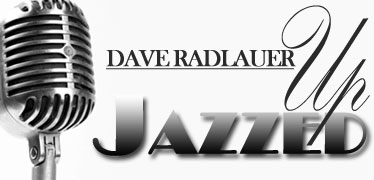
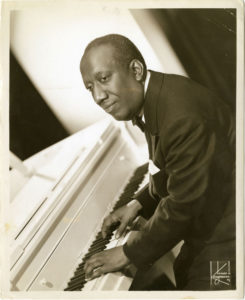
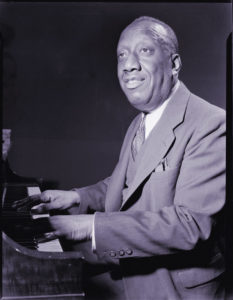
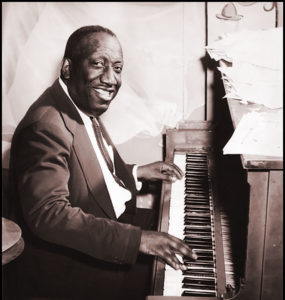
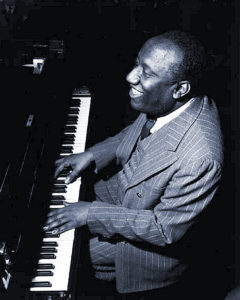
See also:
James P. Johnson on Wikipedia:
https://en.wikipedia.org/wiki/James_P._Johnson
In Search of James P. Johnson:
https://ethaniverson.com/rhythm-and-blues/in-search-of-james-p-johnson/
James P. Johnson on Jazz Rhythm:
http://www.jazzhotbigstep.com/24264.html
The first photo is not from the 20s, but much more likely from the later 30s
Thank you for the correction Terry. Mark Borowsky confirms that the photo is publicity for Johnson’s 1945 Carnegie Hall appearance. Dave R
Johnson ‘s career overlapped the late part of the ragtime era. He retained connections to ragtime until the end of his life. Having said that, Johnson was , arguably, the first jazz pianist . Jelly Roll Morton also belongs on the conversation. However, Johnson’s stride school proved to be the more mainstream, and more influential. For the better part of 3 decades, he was also a writer of many classic Broadway shows, and ventured into the classical realm, composing, opera, a symphony, and a a rhapsody, which incorporated his jazz roots.